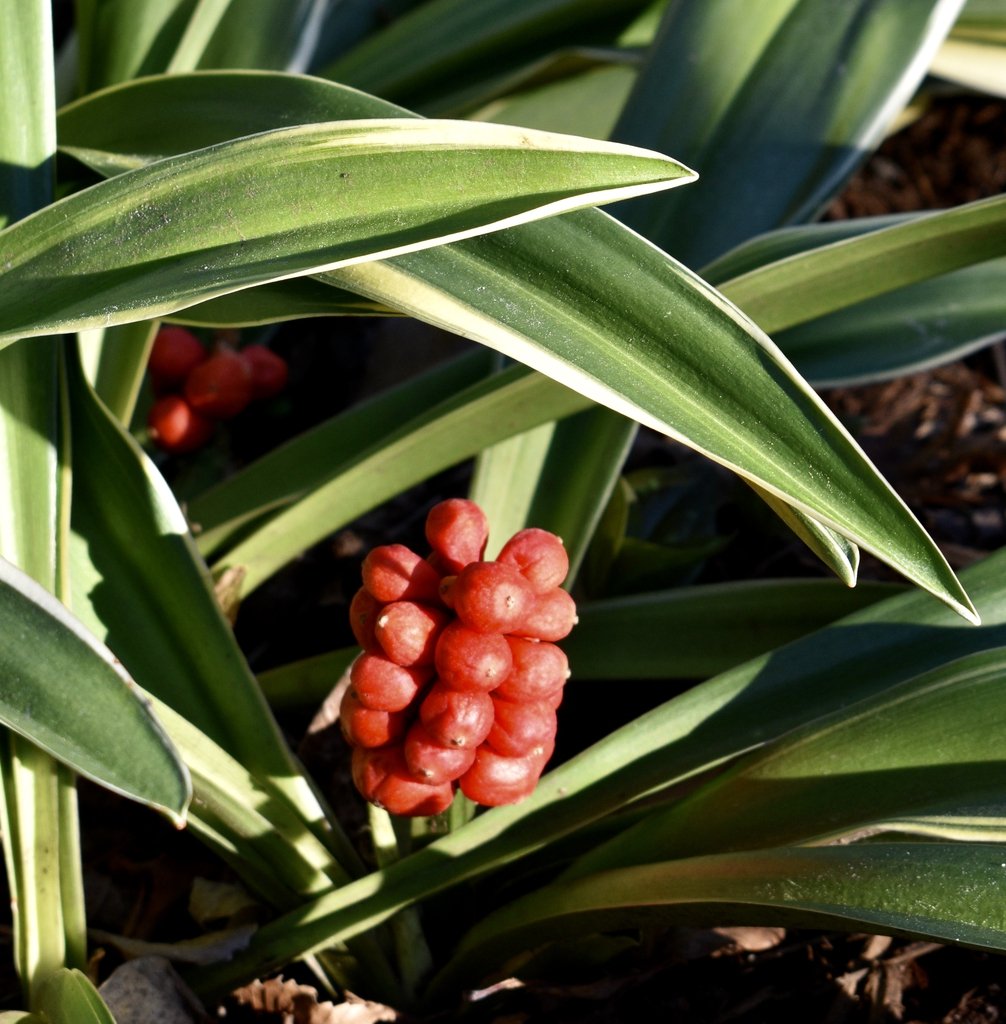Cast Iron Plant, Aspidistra elatior, fills the gardener’s need for an evergreen, vertical plant that will survive in dry shade. Sometimes, though, the long leaves of Cast Iron plants can suffer wind damage and look downright tattered. If you have shady site with neutral to slightly acidic soil, consider Rohdea japonica as a worthy alternative. Rhodea’s leaves are thicker, broader (2-3 inches) and only reach lengths up to 18 inches, making them less vulnerable to wind damage.
Rhodea japonica, pronounced ROH-dee-uh juh-PON-ih-kuh, is also known as Sacred Lily or Nippon Lily. It is in the asparagus family. It is native to Japan and China, and will grow in North America zones 6 – 10. It is prized in Asian cultures, where it is considered an emblem of good luck. It is frequently given as a housewarming present to new homeowners. There are over 600 cultivars registered in Japan. In the US, there are a handful of cultivars available. Some have variegated leaf edges which others sport yellow or white freckles. It could even be mistaken for a variety of Mother-In-Law’s Tongue or Snake Plant.
Plant Delights Nursery in Raleigh, NC offers an excellent selection via mail order. In 2022, the PD catalog said, Considered a good fortune plant in China and Japan, Rohdeas have been cultivated for at least 500 years. In Japan they are treated like an herbaceous bonsai - they are grown in special pots called "nishiki bachi." The variegated and twisted forms of Rohdea japonica often command prices of $1,000 to $10,000 per division. Because Rohdea plants are slow to multiply and have been a perpetual failure in tissue culture, you can be sure they will never be found at mass merchants.
Rhodea is not a bright plant that grabs the attention of passersby. A peek near the plant base reveals a strange looking flower that resembles (to me) the spadix of a Caladium. These pale tan or greenish flower stalks are pollinated by slugs or snails. They produce red or orange berries in fall that persist through winter. Seen against the thick, dark green leaves, the bright berries are beautiful.
Rhodea is rarely bothered by disease, insects, or deer. They look best when planted in groups and can be used as an edger or in the dry shade under trees. In my garden, Rhodea shares a container with a miniature Hosta and an airy fern. This pairing gives great foliage contrasts. Rhodea carries the container through winter while the fern and the Hosta are dormant.
Rhodeas are slow to multiply. They can be divided to increase numbers or started from seed. The latter is recommended only for gardeners with a greenhouse and abundant patience.
Rhodea japonica ‘Marginata’ Photo by Krzysztof Ziarnek, Kenraiz, CC BY-SA 4.0 <https://creativecommons.org/licenses/by-sa/4.0>, via Wikimedia Commons
Rhodea flower stalk. Photo by Alpsdake, CC BY-SA 4.0 <https://creativecommons.org/licenses/by-sa/4.0>, via Wikimedia Commons
Rhodea berries. Photo Cathy Dewitt CC BY-NC 4.0


